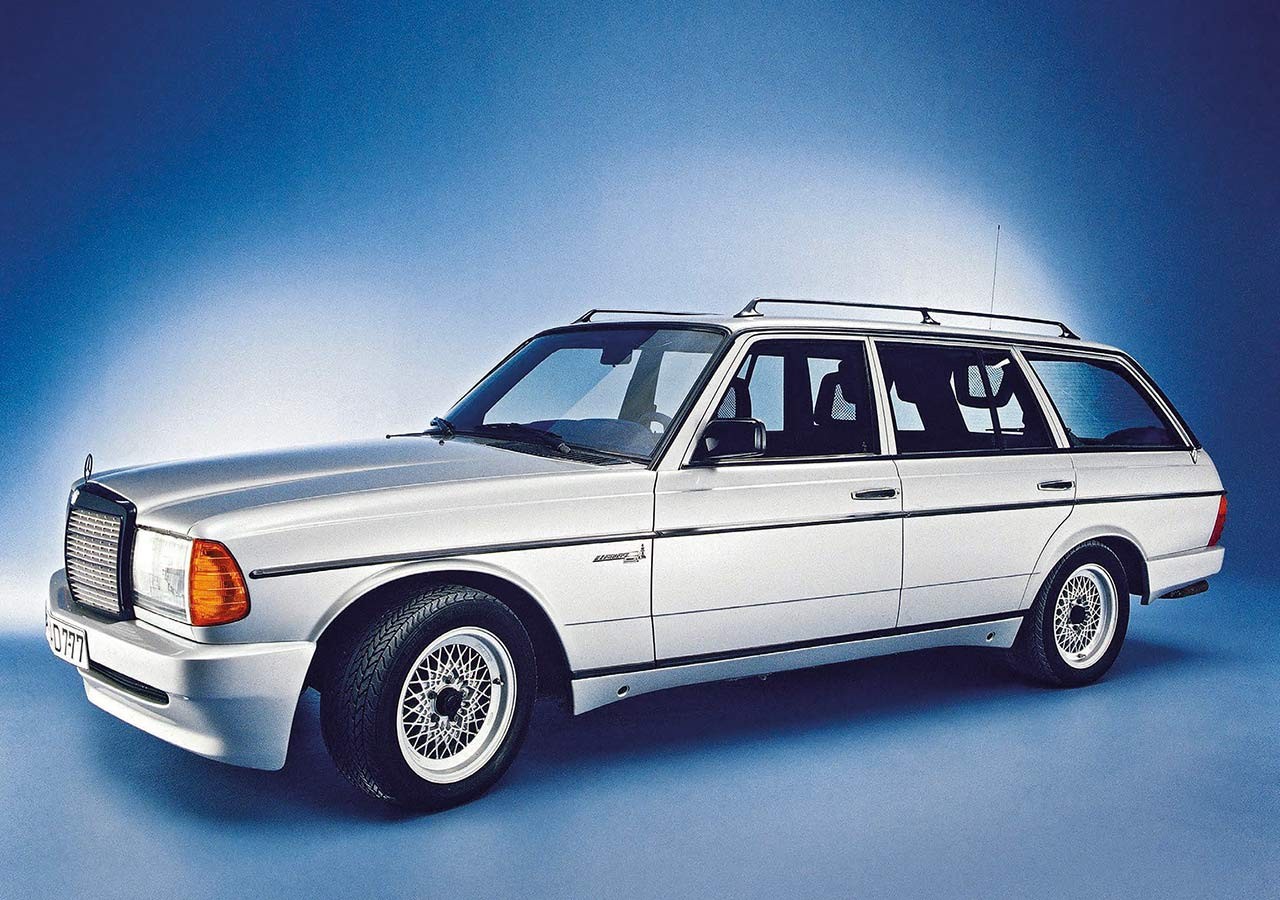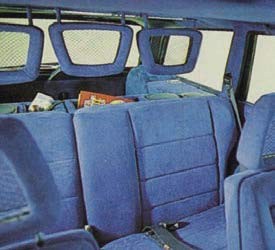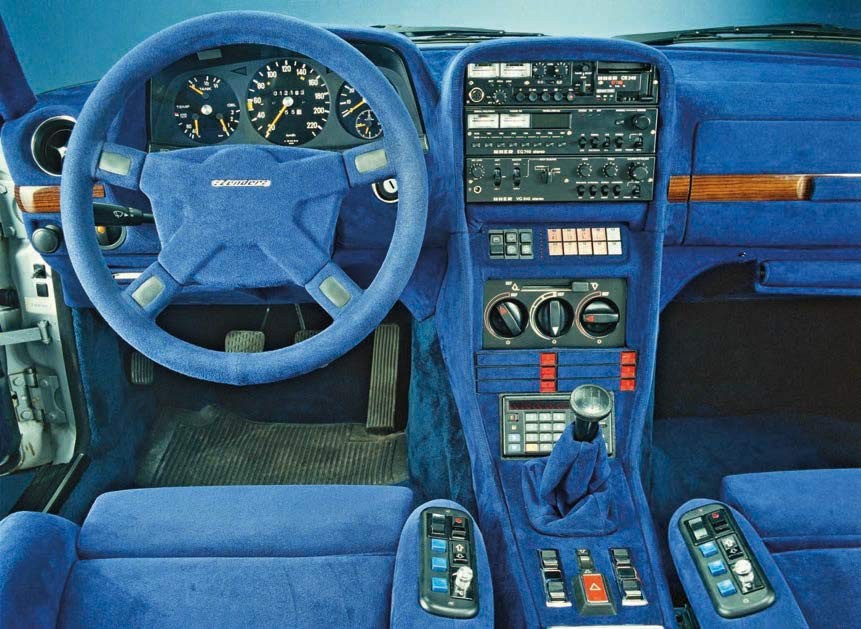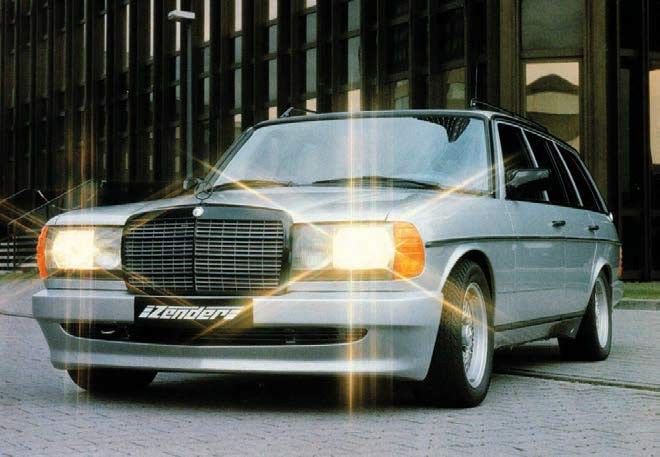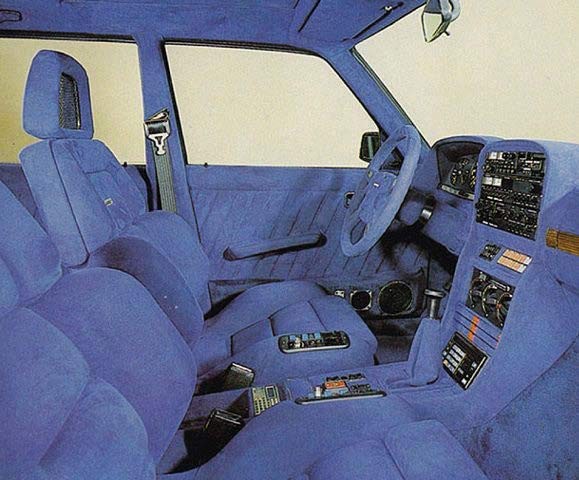Zender was founded in 1969 by Hans-Albert Zender, as a basic tuning and personalisation company specialising in sports seats, sporting graphics, spoilers and larger wheel arches. A lot of Zender’s early work focused on Ford and Volkswagen models, but as the Seventies passed and personalisation grew more popular, he expanded the business into other marques. By 1977, Zender had distributors in over forty countries, and offered a wider range of options including aerodynamic plastic panels.
For some, however, this was not enough – and Zender chose a 280TE as the car upon which to showcase its abilities in 1980. This was not simply a bodykitted Benz, there was much more to it than that. While this example shows questionable taste in our opinion, it certainly shows that companies like Zender could make virtually any automotive dream come true for the right price. This car was the property of Hans Zender himself – a car that could serve as a showcase at motor shows and a daily driver when not on duty. The base car was fairly standard, barring some mild tweaks by AMG to raise peak power from 185bhp to 215bhp. Suspension was lowered by about 1.5” all round, with Koni adjustable dampers and BBS alloy wheels. The gearbox was replaced with a close ratio ZF 5 speed manual. Pirelli P7 tyres were used.
When first shown at the Jochen-Rindt show at Essen in 1980, the car attracted significant amounts of attention – not least from Mercedes-Benz directors, keen to target models at a younger clientele. Externally, the car was bereft of chrome, with all the previously-plated parts finished in dark blue paint to contrast with the silver paintwork. In place of the standard bumpers were aerodynamically shaped plastic panels incorporating a front spoiler, and which matched the additional side skirts. While the outside was still fairly conservative and elegant for a 1980s modified car, the interior was anything but. Get close enough to see inside, and the amount of blue velvet would have the Smurfs fleeing in fear of their hides.
Get past the colour though, and it’s clear to see where Zender really went to town. The front seats are heated and cooled Recaro “Idealseat C” bucket seats, electrically adjustable for rake and height. In the rear are head restraints suspended from the roof and fitted with fishnet inserts, and the dashboard uses an additional binnacle from the taxi-specification cars to house an Uher home stereo system. This 200W masterpiece isn’t strictly an in-car fitment, but Zender adapted it to work in this estate. Beneath it sits the in-car computer and the dialpad for the in car phone – which is hands free and features a microphone in the header rail ahead of the sunroof. The glovebox was enlarged and cooled to serve as a travel fridge.
With Wilton carpet serving not only as a floor covering but as a lower door trim, the whole package oozes luxury and expense. And in 1980, 125000DM was a lot of money – four times the price of the base car. It’s believed that five were made to this specification – though we can find no evidence of any survivors. If you own one – get in touch!
Do you have a modified Mercedes you’d like us to showcase? We welcome individual cars, as well as our look at the world of custom tuning. Write to us at sam.
“Get close enough to see inside, and the amount of blue velvet would have the Smurfs fleeing in fear of their hides.”
Above left: Zender removed all the chrome trimmings, replacing with dark blue paint.

